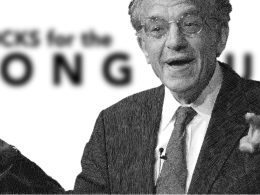The geopolitical and economic landscape took a decisive turn last Wednesday, when the U.S. administration unveiled a sweeping "reciprocal trade policy plan" that resets the rules of global engagement. Through the lens of National Bank Financial Markets' Andrei Busuioceanu, we witness not just a recalibration of tariffs, but a complex reshaping of economic expectations, policy pathways, and market psychology.
“The U.S. administration unveiled its reciprocal trade policy plan, imposing tariffs of at least 10% on all exporters to the United States,” Busuioceanu writes. That opening line sets the tone for a commentary grounded in escalating friction and cautious forecasting.
Here we unpack the layers of insight embedded in Busuioceanu’s comprehensive analysis, integrating trade policy, employment data, monetary expectations, and inflation trends across North America and Europe.
The Formula of Friction: Redefining Tariffs with Math and Message
At the heart of the U.S.’s new strategy lies a “simplified formula”:
“The U.S. trade deficit with a given country divided by the total value of U.S. imports from that country, then divided by two, with a minimum rate set at 10%.”
While elegant in its simplicity, this model effectively targets nations with persistent trade surpluses against the U.S.—China (34%), the European Union (20%), and Vietnam (46%)—turning bilateral imbalances into bilateral tensions. Exclusions for vehicles and spare parts—already subject to a 25% tax—signal a layered approach, where policy levers are deployed sequentially, not universally.
Canada and Mexico: The Eye of the Storm?
As ACEUM (formerly USMCA) partners, Canada and Mexico largely dodged the initial tariff barrage. But exemptions come with conditions.
Busuioceanu details the fine print:
- “ACEUM-compliant goods remain exempt from customs duties.”
- “Non-compliant ACEUM goods are subject to a 25% tariff.”
- “Non-compliant ACEUM energy and potash are taxed at a rate of 10%.”
While 40% of Canadian exports are already ACEUM-compliant, Busuioceanu notes this figure “could double after compliance recognition processes are finalized,” hinting at bureaucratic lag as a critical swing factor. Meanwhile, the auto sector remains delicately balanced: “For ACEUM-compliant automobiles, a 25% tariff is applied to the value of components not produced in the United States,” suggesting that even inside the ACEUM perimeter, strategic vulnerability persists.
Tit-for-Tat: The Trade War Escalates
Retaliation was swift, global, and sharp. Canada responded with a 25% tariff on U.S. vehicles not aligned with ACEUM rules. China, more assertive still, imposed a 34% tax on all U.S. imports, reined in rare earth exports, and initiated “targeted investigations into U.S. companies.”
Markets, predictably, recoiled:
“The S&P 500 index dropped about 9% last week, and the U.S. dollar hit its lowest level against the Canadian dollar since December.”
What Busuioceanu outlines here isn’t a market correction—it’s a macro shock response, driven by policy rather than data. The forward curve on rate expectations adjusted accordingly: “Market expectations for future Federal Reserve rate cuts shifted due to recession fears, increasing from three reductions of 25 basis points each by the end of the year to four.”
Trade war isn’t a risk to be managed; it is now the baseline assumption.
Employment Snapshot: Divergence Across Borders
Economic fundamentals were also in focus, with March employment reports revealing stark contrasts between the U.S. and Canada.
In Canada:
“Employment fell by 32,600 jobs—the worst monthly performance in 38 months… the private sector recorded its worst drop since the 2021 lockdowns (-48,000).”
Nine of sixteen sectors declined. Full-time job losses totaled 62,000. SME sentiment? Historic low. And while Canada avoided direct tariff fire, the collateral damage of American protectionism is showing up in labor dynamics and confidence indices. Busuioceanu observes, “The Bank of Canada may be forced to react, but whether it opts for a rate cut or a pause remains uncertain ahead of its April decision.”
In the U.S., the headline figures looked more resilient:
“Nonfarm payrolls increased by 228,000 jobs in March, surpassing economists’ expectations… Full-time employment surged by 459,000.”
But underneath the surface, cracks are forming. Temporary employment—a classic leading indicator—is now “20.4% below its post-pandemic peak.” Meanwhile, wage growth slowed to 3.8% YoY, the lowest pace in eight months. These twin realities—strong current data but weakening forward signals—put the Fed in an unenviable position: navigate a soft landing while staring down inflation risk and a trade-fueled recessionary cloud.
Eurozone: Stability with a Fragile Core
Turning to Europe, Busuioceanu reports that preliminary March CPI data came in on target:
“On a monthly basis, the price basket increased by 0.6%, translating to an annual inflation rate of 2.2%.”
Yet core inflation (excluding energy, food, alcohol, and tobacco) was “slightly higher at 2.4%, but… dropped two points from the previous month.” That subtle shift—a weakening core—may embolden the ECB to maintain accommodative posture despite external risks. A stronger labor signal—the unemployment rate fell to 6.1% in February—adds weight to the view that monetary patience could prevail.
Eyes Forward: The Inflation Watch Continues
“This week, all eyes will be on U.S. inflation data,” Busuioceanu concludes. The Federal Reserve’s next steps hinge on how that data balances the dual threats: recession on one side, resurgent inflation on the other. Trade friction is the wild card that could push either scenario into reality—or perhaps both simultaneously.
The overarching takeaway is not merely informational but strategic. For advisors, allocators, and institutional asset managers, the imperative is to remain alert to policy-induced volatility, shifting rate trajectories, and divergences in economic momentum. Geographic diversification, sector selectivity, and currency hedging are not tactical options anymore—they are portfolio pillars in a new era of economic nationalism.
The world didn’t just get more complicated—it got more interconnected and more fragmented at the same time. As Busuioceanu’s closing note reminds us: “The Federal Reserve seeks to balance the risks of an economic slowdown and a potential resurgence of inflation driven by trade tensions.”
Welcome to the age of the reciprocal economy.
















